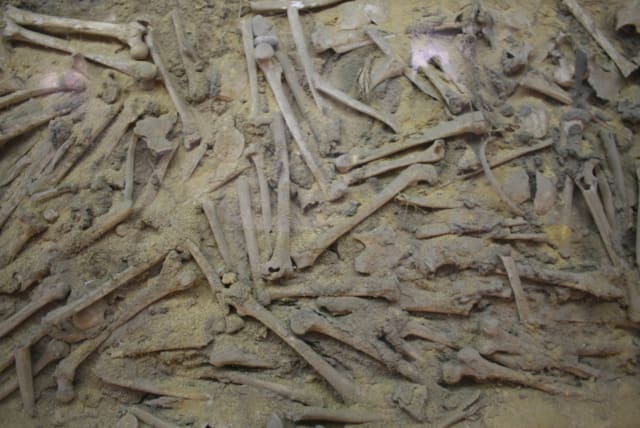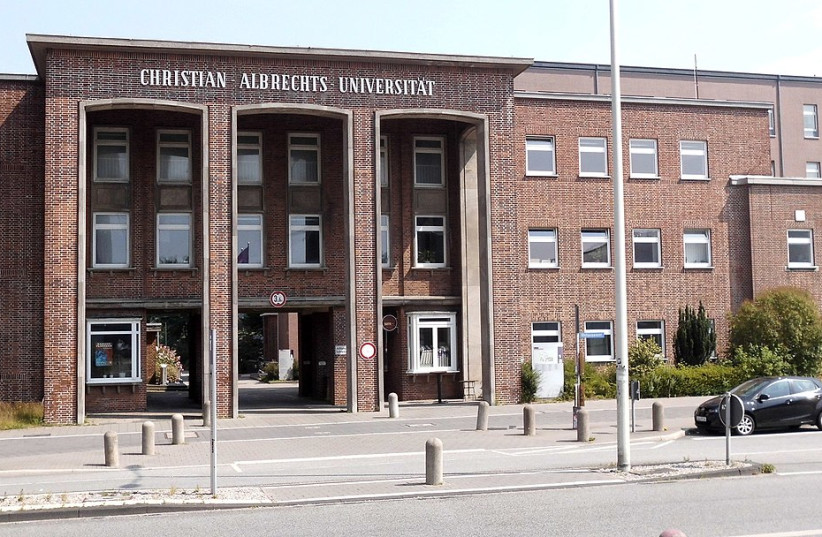Headless skeletons in a settlement trench: A 7,000-year-old mass grave?

Researchers uncovered the headless remains of dozens of people in a trench. Now, they're trying to piece together the story of how the skeletons got there.
A trench containing 38 headless skeletons was uncovered at an excavation site in Vráble, Slovakia by archaeologists from Germany's Christian-Albrecht University (CAU) and Slovakia's Archaeological Institute of the Slovak Academy of Sciences back in August of 2022.
The findings were expanded upon in detail on the CAU website this past Wednesday.
The excavation site, Vráble-Ve'lke Lehemby, dates back to Central Europe's Early Neolithic era (5,250-4,950 BCE) and is comprised of the remnants of three neighboring villages and is one of the largest settlements of the time and place.
What was important about the excavations in Vráble-Ve'lke Lehemby?
The settlement was remarkably developed for the era as well, with 80 houses being inhabited contemporaneously, a 1.3 km double ditch surounding one of the villages and border-deliniating palisades.
The skeletonized remains of the 38 individuals were spread haphazardly over an area of roughly 15 square meters. The careless positioning of the bodies suggests that they were tossed or rolled roughly into the grave. Furthermore, with the exception of only one of the skeletons, an infant's, each individual was missing its skull.
"In mass graves with an unclear positioning, the identification of an individual is usually based on the skull, so for us, this year's find represents a particularly challenging excavation situation,” says prof. Martin Furholt, the leader of the project.
Despite initial appearances, there are some indicators that headless bodies discovered in the trench were not necessarily the victims of a mass execution. For instance, one of the researchers posits that the positioning of the corpses may not be a result of being thrown or rolled into the trench, but that bones that had already been there have been pushed aside to make room for further bodies.
Additionally, some of the skeletons show signs that their heads were removed carefully, post-mortem rather than as part of a violent killing blow. The researchers acknowledge that more study is required to make a determination.
Further investigation will examine any connections between the decapitated individuals. Any commonalities between them could help the archaeologist piece together their story. It's also possible that the individuals met their ends from either internal or external violence and do not, in fact, share any commonalities aside from being residents of the same place.
Whatever the case may be, the site is being hailed as "unique" by the archaeologists and there is undoubtedly a lot left to learn from the neolithic era settlement.
Jerusalem Post Store
`; document.getElementById("linkPremium").innerHTML = cont; var divWithLink = document.getElementById("premium-link"); if (divWithLink !== null && divWithLink !== 'undefined') { divWithLink.style.border = "solid 1px #cb0f3e"; divWithLink.style.textAlign = "center"; divWithLink.style.marginBottom = "15px"; divWithLink.style.marginTop = "15px"; divWithLink.style.width = "100%"; divWithLink.style.backgroundColor = "#122952"; divWithLink.style.color = "#ffffff"; divWithLink.style.lineHeight = "1.5"; } } (function (v, i) { });

